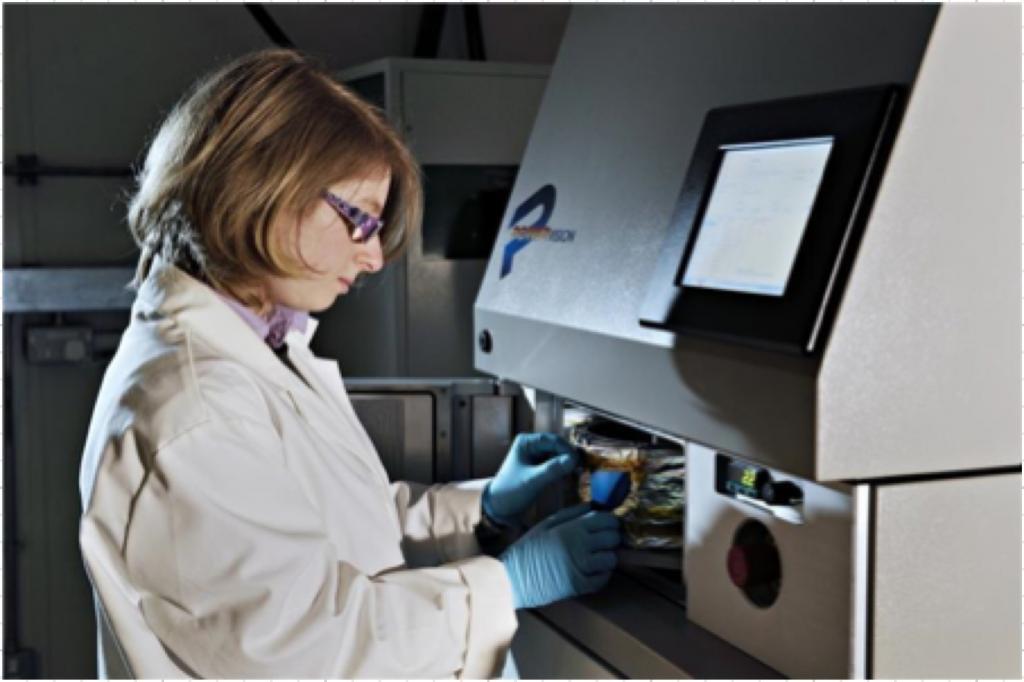Researchers at UK’s Loughborough University have developed a new multi-layer anti-reflection (AR) coating for solar panels that simultaneously reduces reflection and improves module efficiency.
The AR coating developed at the Centre for Renewable Energy and Sustainable Technology (CREST) reduces reflection by more than 70% across the range of the solar spectrum accepted by PV panels, resulting in a 4% improvement in module efficiency. Professor Michael Walls of CREST adds that the new coatings “will be low cost if manufactured in high volume.”
The CREST AR coating consists of four alternate layers of zirconium oxide and silicon dioxide – materials chosen for their low-cost and abundance – which are deposited using the same low-cost method used to deposit AR coatings on spectacle lenses (magnetron sputtering) as seen in the image below. The coating’s efficacy is demonstrated in the image above which compares a coated and non-coated PV glass cover sheet.
Image Credit: Loughborough University
Researchers have made a careful trade-off between effectiveness and cost for this design. Dr. Piotr Kaminski, who co-developed the coating with Prof. Walls, says: “The AR coating has to be cost effective and so the design is a compromise. We want the best quality AR coating but with inexpensive materials and as few layers as possible. Also, the whole stack should be very thin” – 300 nm in this case – “to save time in manufacturing.”
The CREST researchers also claim the material is scratch resistant and durable enough to be effective for the lifetime of most PV modules (25 years). Although the initial coatings developed are tailored specifically for thin film Cadmium Telluride (CdTe) PV modules, Dr. Kaminski says the technology can be tailored for CIGS (copper indium gallium selenide), amorphous silicon, crystalline silicon, organics or even perovskite cells – all thanks to the multi-layer design, which makes it “relatively simple to accommodate” for various PV technologies, each of which operates in a slightly different range of the sun’s spectrum.
Prof. Walls reckons their technology is “…a great added value proposition for float glass manufacturers”. The researchers are hoping the low cost and abundance of the coating materials, the scaleable nature of the deposition process and the cost-effective design will make their technology an attractive sell to manufacturers of float glass (the predominant glass type used to make front sheets in solar panels). “We really want to see these AR coatings implemented by manufacturers,” he says.
And if predictions for the solar AR coated glass market are any indication, they may well find buyers for their technology. A quick look at the projected market share for AR coating in the solar glass sector suggests that 75% of all new PV modules in 2014 will be AR coated, and by 2017, that fraction is expected to reach 90%.
Top Image Credit: Loughborough University
© 2014 Solar Choice Pty Ltd
- Future of Utilities – Part 1: The death of base-load generators - 11 September, 2014
- Sharp enters energy storage market with SmartStorage - 18 August, 2014
- Phinergy extends electric car range with metal-air battery technology - 13 August, 2014
